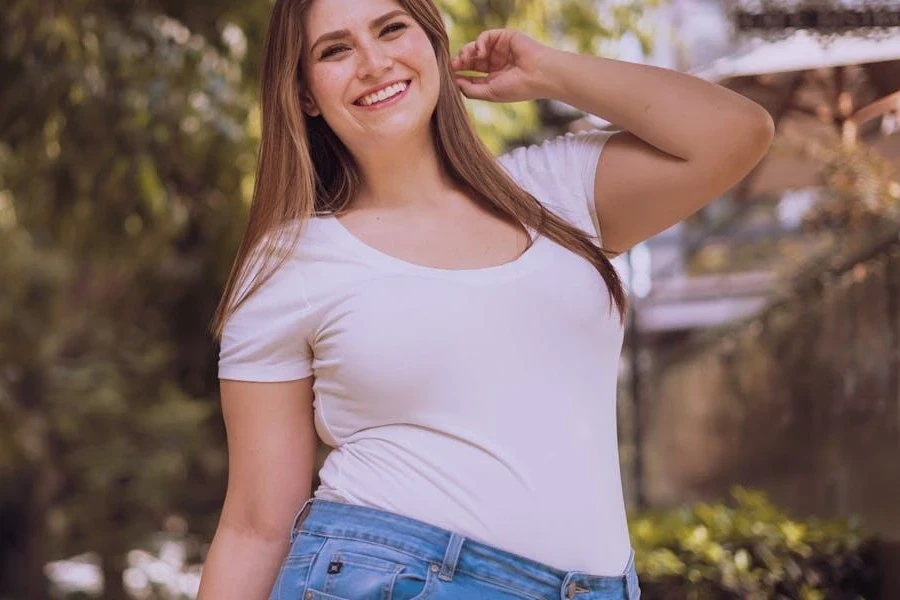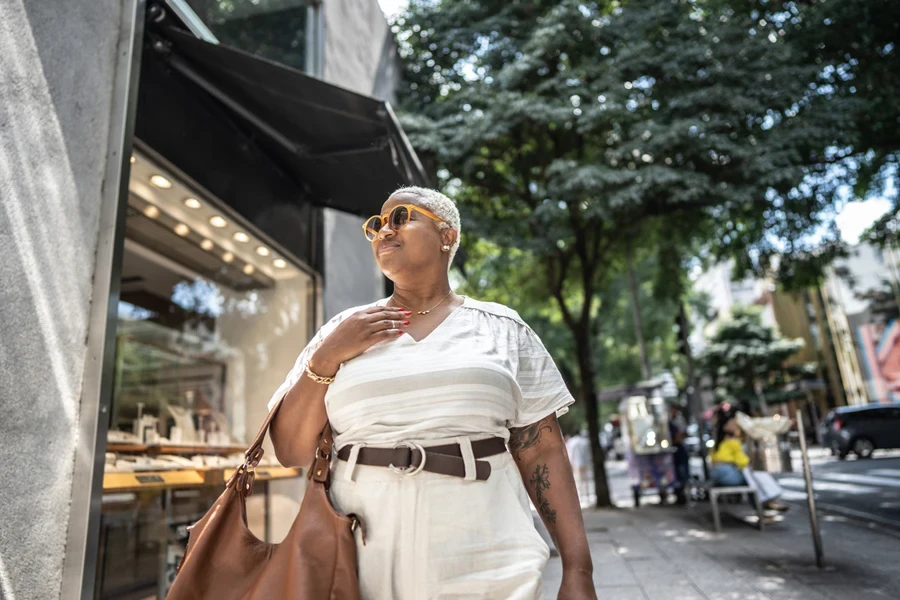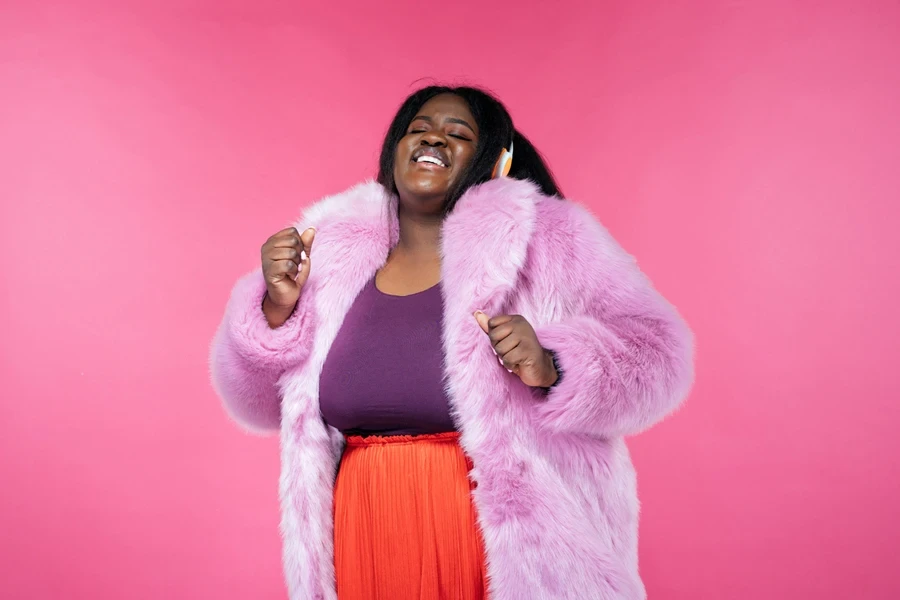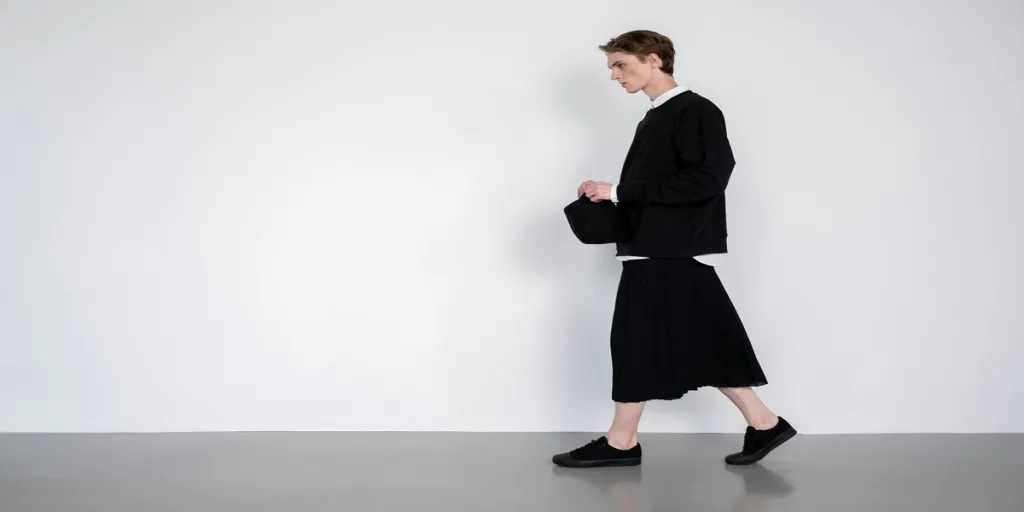Ozempic has taken the world by storm, ranking 90th on the 2021 list of commonly prescribed drugs. Experts say the drug saw approximately 8.2 million prescriptions in the U.S. alone, showing how popular it has become since its approval in 2017. However, EDITED’s report predicts that up to 70 million people will be using the drug by 2028.
While many praise the drug for helping many manage their weight, Ozempic has become so popular that it’s causing ripple effects in the fashion industry. Industry leaders and giant retailers have noticed a higher demand for smaller clothing sizes, although experts haven’t said the drug is the leading cause. For this reason, many are already questioning the future of size inclusivity, especially as more consumers turn to weight-loss solutions.
This article will explore how the fashion industry responds to these shifts, its challenges, and the opportunities that small businesses can leverage in 2025.
Table of Contents
Shifting size ranges: Are larger sizes falling behind?
A look at the disconnect in fashion trends across sizes
2 case studies on how businesses can leverage size inclusivity
The road ahead
Shifting size ranges: Are larger sizes falling behind?

Despite the surging demand for smaller sizes, some brands still commit to size inclusivity. For instance, EDITED says that Universal Standard, a brand known for offering a range of sizes from 00 to 40, reports that its most popular sizes remain medium or 18 to 20. Interestingly, this brand has yet to feel the impact of the Ozempic trend and is on track to register a 20% sales boost in 2024.
However, the broader industry trend shows a worrying decrease in the availability of larger sizes. For instance, Aritzia is one of the many retailers focusing on smaller sizes, with their 2XL options dropping by nearly 5% in 2024. On the other hand, fashion brands like Monki saw a massive drop in their plus-size offerings, with 2XL sizes falling from 13.79% to just 0.29% of their total range in 2024.
So, while some brands are still trying to cater to all body types, others are slowly moving away from size inclusivity. Here’s a quick look at other key retailers’ new dress arrivals size ranges in 2023 vs. 2024 (according to EDITED Market Data).
Zara UK dress size range 2023 vs. 2024
| UK Size | 2023 | 2024 |
| 2XS | 0.05% | 0.05% |
| XS | 14.54% | 15.64% 📈 |
| S | 21.87% | 20.73% 📉 |
| M | 21.87% | 20.73% 📉 |
| L | 21.82% | 20.73% 📉 |
| XL | 13.78% | 15.72% 📈 |
| 2XL | 6.07% | 7.01% 📈 |
H&M US dress size range 2023 vs. 2024
| US Size | 2023 | 2024 |
| 2XS | 3.60% | 3.74% 📈 |
| XS | 15.78% | 15.89% 📈 |
| S | 15.78% | 15.96% 📈 |
| M | 15.81% | 15.93% 📈 |
| L | 15.82% | 15.35% 📉 |
| XL | 15.45% | 15.24% 📉 |
| 2XL | 14.30% | 14.75% 📈 |
| 3XL | 1.75% | 1.57% 📉 |
| 4XL | 1.70% | 1.57% 📉 |
A look at the disconnect in fashion trends across sizes

One of the most glaring issues in modern fashion is the disconnect between trends offered in straight vs. plus sizes. For example, EDITED reports that mini skirts and dresses are popular in mini-size ranges, making up 40% of skirts at ASOS and 33% of dresses at Reformation. However, it’s not the same for plus-size collections, where the same styles make up only 13% of each brand’s offerings.
This gap shows that plus size models don’t experience current fashion trends, which are not size-inclusive. Hence, retailers should pay attention to these gaps and ensure their plus-size ranges offer the same trendy styles as their straight-size counterparts. According to Grand View Research, the global plus-size market will reach US$ 412.39 billion by 2030, proving there is a moral and financial incentive to prioritize size inclusivity in 2025.
2 case studies on how businesses can leverage size inclusivity
1. ASOS UK

ASOS provides an interesting case study on how the fashion industry handles size inclusivity. While the brand has pulled back on its plus-size range, reducing it by 15%, it still offers more options in Curve than in Petite by a margin of 130%. ASOS has also almost doubled its range of Curve accessories, highlighting an untapped opportunity for size inclusivity in categories beyond clothing.
However, experts have noticed a disconnect in trends between ASOS Design and ASOS Curve. For example, shorter hemlines are much more common in the straight-size collection, making up 40% of skirts, while they only account for 13% of Curve styles. Experts also say ASOS must address this trend gap to maintain its reputation as a brand for all body types.
Untapped potential for plus sizes
While brands like ASOS show a shift towards smaller sizes in some areas, retailers can still leverage significant opportunities to tap into the plus-size market. For starters, they can translate current fashion trends into plus sizes. Take bubble hems, for example. This design is yet to grace plus-size collections, so retailers can consider expanding their offerings to include the trend in larger sizes.
Patterned maxi skirts are another style with untapped potential for plus sizes. While tiered gingham and leopard maxis have been popular in ASOS Design, similar styles in Curve only have solid colors. Hence, retailers can consider offering consistent styles across all sizes as a great way to add more prints to plus-size collections.
2. Reformation

Reformation is another brand that made significant changes to its size offerings. However, these changes have yet to favor size inclusivity. As mentioned earlier, Reformation cut its plus-size options by 46% YoY, with the most significant reductions in bottoms (which dropped by 60%). Nevertheless, the brand introduced more plus-size top options, including linen waistcoats and tie-front styles.
Untapped potential for plus sizes
One of Reformation’s biggest gaps is its all-in-ones, outerwear, swimwear, and underwear categories, where plus sizes are underrepresented. The brand also offers longer hemlines for its plus-size range, with mini styles making up only 13% of dresses compared to 33% in straight sizes. Smaller retailers can tap into these gaps to help plus-size consumers solve the challenges of finding trendy clothing that fits.
The road ahead
As the fashion industry continues to evolve, it must address the challenges of size inclusivity head-on. The rise of Ozempic and the shift towards smaller sizes in some areas have highlighted the need for a more inclusive approach to fashion.
Retailers and brands must ensure they offer trendy, fashionable clothing in a wide range of sizes, from petite to plus. Tapping into these untapped markets can help companies increase sales and foster a more inclusive fashion industry that welcomes people of all sizes.




